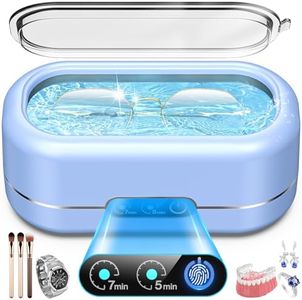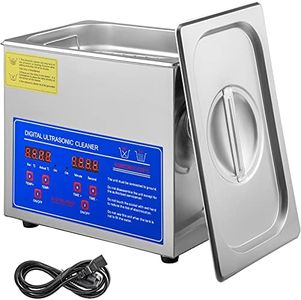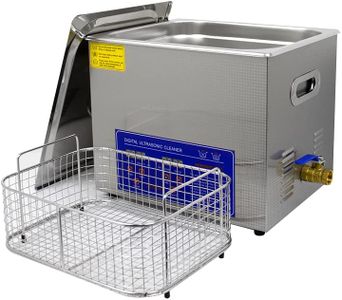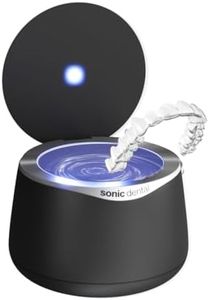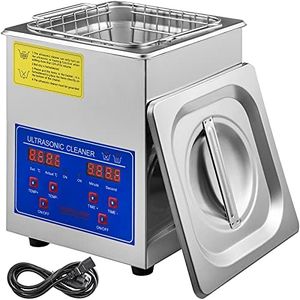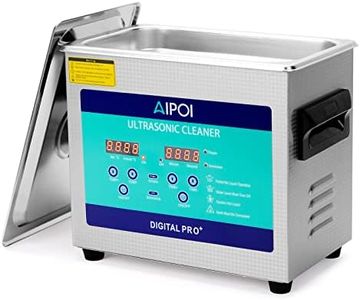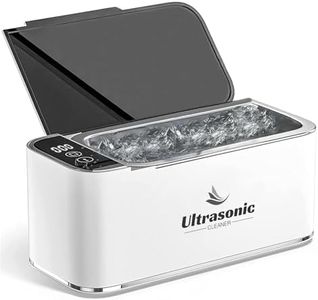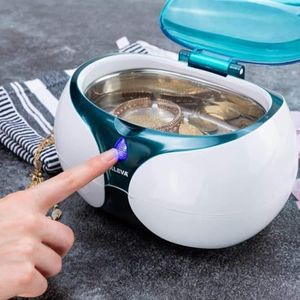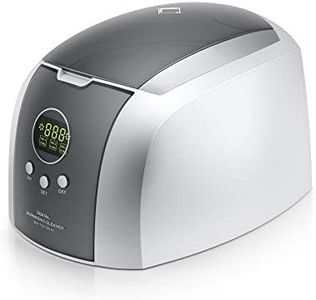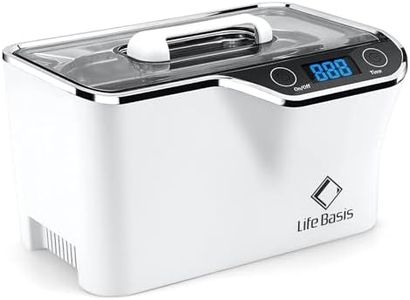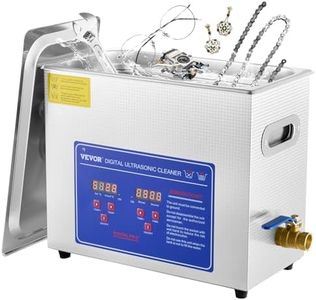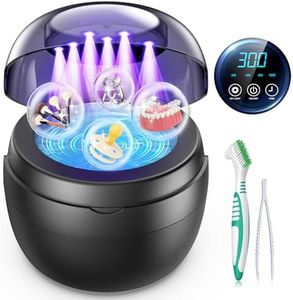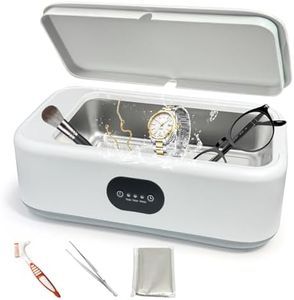We Use CookiesWe use cookies to enhance the security, performance,
functionality and for analytical and promotional activities. By continuing to browse this site you
are agreeing to our privacy policy
10 Best Ultrasonic Cleaning Machine
From leading brands and best sellers available on the web.By clicking on a link to a third party's website, log data is shared with that third party.
Buying Guide for the Best Ultrasonic Cleaning Machine
Choosing an ultrasonic cleaning machine can feel overwhelming, but focusing on how you'll use it makes the process much easier. Think about what types of items you need to clean, how often you'll use the machine, and the size and material of those items. Ultrasonic cleaners work by sending high-frequency sound waves through a cleaning solution, quickly removing dirt and grime from surfaces that are hard to clean by hand. The right model for you depends on your cleaning needs, so understanding the main features will help you select a machine that fits your requirements.Tank CapacityTank capacity refers to how much cleaning solution the machine can hold. This is important because the size of the tank determines the maximum size and number of items you can clean at one time. Small tanks are suitable for items like jewelry or eyeglasses, while larger tanks are needed for tools, automotive parts, or bigger batches of items. When choosing, consider the largest item you plan to clean and make sure the tank will comfortably fit it along with the cleaning solution.
Ultrasonic FrequencyUltrasonic frequency is measured in kilohertz (kHz) and indicates how many sound wave vibrations occur per second. Lower frequencies (around 25-40 kHz) produce larger bubbles and are more effective for cleaning heavy grime on robust items like metal parts. Higher frequencies (above 45 kHz) create smaller bubbles and provide gentler cleaning, ideal for delicate items like circuit boards or fine jewelry. Your choice should be guided by the types of items you’re cleaning—choose lower frequencies for sturdy items with tough dirt, and higher frequencies for intricate or fragile objects.
Heating FunctionSome ultrasonic cleaning machines come with a built-in heater to warm the cleaning solution. Heating improves the cleaning effectiveness for certain contaminants and helps remove grease, oils, and waxes more easily. Machines with adjustable heaters let you set the temperature for different cleaning tasks. If you frequently clean items with oily or stubborn deposits, a model with a heating function will serve you best; for light dirt on sensitive items, this may not be necessary.
Timer SettingsTimer settings allow you to control how long the cleaner operates during each cycle. This helps prevent over-cleaning or potential damage to sensitive items. Shorter cycles (a few minutes) are often enough for simple cleaning, while tougher jobs may need longer periods. Selecting a machine with flexible timer options ensures you can adjust the cleaning duration to suit the specific needs of different objects and their levels of soiling.
Power OutputPower output, typically measured in watts, indicates how much energy the machine uses to produce ultrasonic waves. Higher power generally results in more vigorous cleaning, which is beneficial for heavily soiled or larger items but can be too strong for fragile objects. For household and regular maintenance tasks, moderate power is usually sufficient, while specialized or industrial use may need a more powerful machine. Always match the power level to the toughness of your cleaning jobs.
Material and Build QualityThe construction materials of an ultrasonic cleaner affect both durability and maintenance. Stainless steel tanks are the most common and resist corrosion from cleaning solutions, making them long-lasting and reliable. Lesser materials may not withstand heavy or regular use over time. If you anticipate frequent use or exposure to harsh chemicals, prioritize a model with a sturdy, corrosion-resistant tank and solid build quality.
